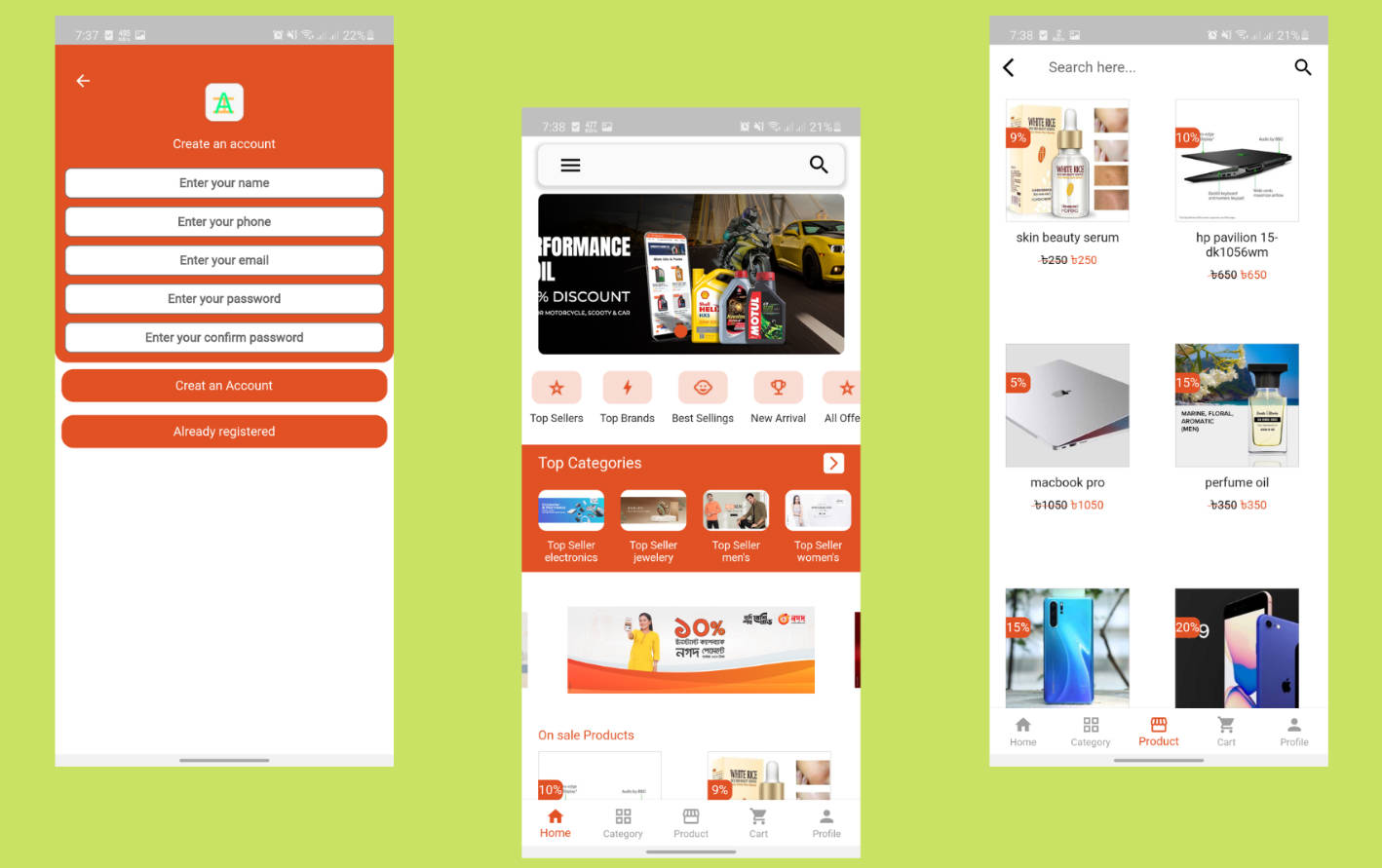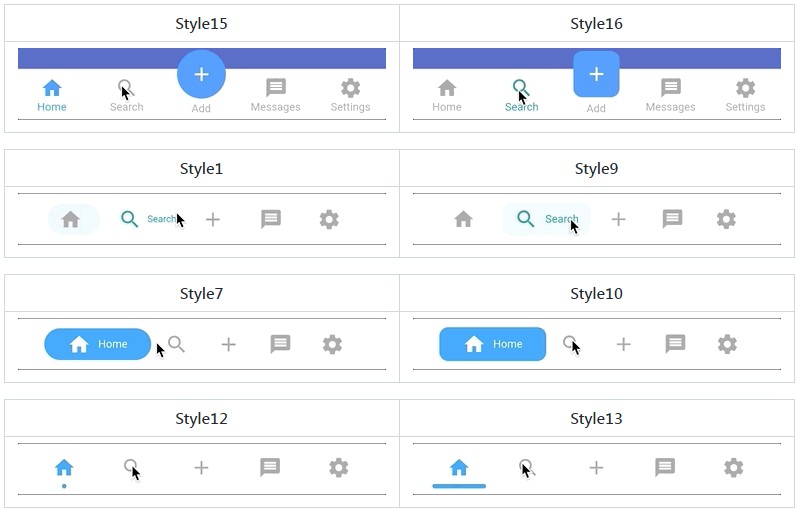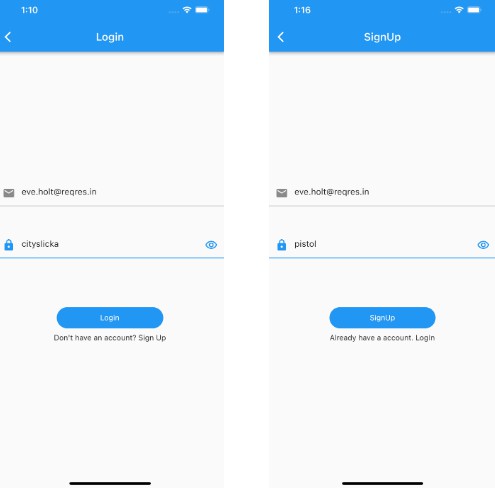View Model X
An Android similar state management package which helps to implement MVVM pattern easily.
Note: In Android, ViewModel have an special functionality of keeping the state on configuration change. The ViewModel of this package is not for that as Flutter Project doesn’t need it. It is only for separating the View Logic from UI.
🚀 LIVE DEMO OF EXAMPLE PROJECT: https://shubham-gupta-16.github.io/view_model_x/
Features
- Simplified 😎 State Management
- Similar code pattern with an Android project 🟰
- Easy for developers to migrate 🛩️ from Android to Flutter
- Allows developer to work with both Android to Flutter projects with ease 🐥
- Easy to implement MVVM pattern 💪
Package Components
- StateFlow, MutableStateFlow (equivalent to LiveData) ⛵
- SharedFlow, MutableSharedFlow 🌊
- ViewModel (to separate the view logic from UI like Cubit)
- ViewModelProvider
- StateFlowBuilder
- StateFlowConsumer
- StateFlowListener
- SharedFlowListener
- MultiFlowListener
- ChangeNotifierProvider
- MultiProvider
Usage
my_view_model.dart
class CounterViewModel extends ViewModel {
// initialize MutableStateFlow with initial value 1
final _counterStateFlow = MutableStateFlow<int>(1);
StateFlow<int> get counterStateFlow => _counterStateFlow;
// you can also define more the one StateFlow or SharedFlow inside any ViewModel
void increment() {
// by changing the value, listeners notified
_counterStateFlow.value = _counterStateFlow.value + 1;
}
@override
void dispose() {
// must dispose all the StateFlows and SharedFlows
_counterStateFlow.dispose();
}
}
main.dart
void main() => runApp(CounterApp());
class CounterApp extends StatelessWidget {
@override
Widget build(BuildContext context) {
return MaterialApp(
home: ViewModelProvider(
create: (_) => CounterViewModel(),
child: CounterPage(),
),
);
}
}
counter_page.dart
class CounterPage extends StatelessWidget {
const CounterPage({Key? key}) : super(key: key);
@override
Widget build(BuildContext context) {
return Scaffold(
appBar: AppBar(title: const Text('ViewModel Counter Example')),
body: Center(
// implement StateFlowBuilder to rebuild Text on StateFlow value changed/updated
child: StateFlowBuilder(
// pass your StateFlow
stateFlow: context.vm<CounterViewModel>().counterStateFlow,
builder: (context, value) {
return Text("$value", style: const TextStyle(fontSize: 30));
},
),
),
floatingActionButton: FloatingActionButton(
onPressed: () {
// call the increment function which is inside MyViewModel
ViewModelProvider.of<CounterViewModel>(context).increment();
},
child: const Icon(Icons.add),
),
);
}
}
Package Components
ViewModel (Create custom ViewModel class)
Create your custom View-Model which must extends ViewModel. Declare all your Flows and View related logic inside of it.
Don’t forget to dispose all flows inside dispose method of ViewModel.
class CustomViewModel extends ViewModel {
// initialize StateFlow
final _myStateFlow = MutableStateFlow<int>(1);
StateFlow<int> get myStateFlow => _myStateFlow;
// view related logic here
@override
void dispose() {
// must dispose all flows
_myStateFlow.dispose();
}
}
PostFrameCallback with ViewModel
This will help to get onPostFrameCallback event inside ViewModel easily.
By using PostFrameCallback, we can go from:
WidgetsBinding.instance.addPostFrameCallback((_){
// do stuffs here
})
to
class CustomViewModel extends ViewModel with PostFrameCallback {
//...
@override
void onPostFrameCallback(Duration timestamp) {
// do stuffs here
}
}
MutableStateFlow and StateFlow
MutableStateFlow is inherited from StateFlow. It stores value and notify listeners whenever it changes. It can change/update the value.
It is recommended to initialize private
MutableStateFlowand create a publicStateFlowgetter of it.
final _myStateFlow = MutableStateFlow<int>(1, notifyOnSameValue: true);
StateFlow<int> get myStateFlow => _myStateFlow;
Here, notifyOnSameValue is optional. If notifyOnSameValue is set to false, whenever you call stateFlow.value = newValue
where newValue is same as current value, it will not notify listeners. by default it is set to true.
To change the value
_myStateFlow.value = 5; // listeners were automatically notified
To update the value
_listStateFlow.update((value) {
value.add(obj);
}); // listeners were automatically notified
MutableSharedFlow and SharedFlow
MutableSharedFlow is inherited from SharedFlow. It is used to send data to the listeners. It can emit the value.
It is recommended to initialize private
MutableSharedFlowand create a publicSharedFlowgetter of it.
final _mySharedFlow = MutableSharedFlow<String>();
SharedFlow<int> get mySharedFlow => _mySharedFlow;
To emit the value
_myStateFlow.emit("Hello from ViewModel!"); // listeners were automatically notified
Integrate ViewModel Into Flutter Widget
ViewModelProvider
ViewModelProvider is used to wrap the widget with your custom ViewModel.
This requires create which accepts custom ViewModel and child Widget.
ViewModelProvider(
create: (context) => counterViewModel, // provide your custom viewModel
child: ChildWidget(),
);
Get ViewModel instance inside Widget Tree
ViewModelProvider.of<CustomViewModel>(context)
OR
context.vm<CustomViewModel>()
Builder, Listener, and Consumer Flutter Widgets
StateFlowBuilder
StateFlowBuilder is used to rebuild the widgets inside of it.
This requires stateFlow to listen on and builder to which rebuilds when the stateFlow‘s value changed/updated.
StateFlowBuilder(
stateFlow: context.vm<CustomViewModel>().myStateFlow, // pass StateFlow
builder: (context, value) {
return ChildWidget(value); // rebuild the widget with updated/changed value.
},
)
StateFlowConsumer
StateFlowConsumer is used to rebuild the widgets inside of it and call the listener.
This requires stateFlow to listen on, builder and listener.
Whenever stateFlow‘s value changed/updated, builder will rebuild the widgets inside of it and listener will called.
StateFlowConsumer(
stateFlow: ViewModelProvider.of<CustomViewModel>(context).myStateFlow, // pass SharedFlow
listener: (context, value) {
// do stuff here based on value
},
builder: (context, value) {
return ChildWidget(value); // rebuild the widget with updated/changed value.
},
)
StateFlowListener
StateFlowListener is used to catch the change/update value event of a stateFlow.
This requires stateFlow, listener and child.
Whenever stateFlow‘s value changed/updated, listener will called.
StateFlowListener(
stateFlow: ViewModelProvider.of<CustomViewModel>(context).myStateFlow, // pass StateFlow
listener: (context, value) {
// do stuff here based on value
},
child: ChildWidget(),
)
SharedFlowListener
SharedFlowListener is used to catch the emitted value from sharedFlow.
This requires sharedFlow, listener and child.
Whenever sharedFlow emits a value, listener will called.
SharedFlowListener(
sharedFlow: ViewModelProvider.of<CustomViewModel>(context).mySharedFlow, // pass SharedFlow
listener: (context, value) {
// do stuff here based on value
},
child: ChildWidget(),
)
MultiFlowListener
MultiFlowListener is a Flutter widget that merges multiple SharedFlowListener and StateFlowListener widgets into one.
MultiFlowListener improves the readability and eliminates the need to nest multiple listeners.
By using MultiFlowListener we can go from:
SharedFlowListener(
sharedFlow: context.vm<ViewModelA>().mySharedFlow,
listener: (context, value) {
// do stuff here based on value
},
child: StateFlowListener(
stateFlow: context.vm<ViewModelA>().myStateFlow,
listener: (context, value) {
// do stuff here based on value
},
child: SharedFlowListener(
sharedFlow: context.vm<ViewModelB>().anySharedFlow,
listener: (context, value) {
// do stuff here based on value
},
child: ChildA(),
)
)
)
to
MultiFlowListener(
providers: [
SharedFlowListener(
sharedFlow: context.vm<ViewModelA>().mySharedFlow,
listener: (context, value) {
// do stuff here based on value
},
),
StateFlowListener(
stateFlow: context.vm<ViewModelA>().myStateFlow,
listener: (context, value) {
// do stuff here based on value
},
),
SharedFlowListener(
sharedFlow: context.vm<ViewModelB>().anySharedFlow,
listener: (context, value) {
// do stuff here based on value
},
),
],
child: ChildA(),
)
Extra Provider
This package also includes some of Provider components with some modification. These are:
ChangeNotifierProvider
This will allows to wrap a widget around ChangeNotifier.
ChangeNotifierProvider(
create: (context) => CustomChangeNotifier(),
child: WidgetA(),
)
To get the instance of ChangeNotifier or listen for notifyListeners():
ChangeNotifierProvider.of<CustomChangeNotifier>(context, listen: true)
If listen is true, the Widget will rebuild on notifyListeners(). This can also be written in simplified way.
If want to listen for notifyListeners(), use:
context.watch<CustomChangeNotifier>()
Or if want only instance, use:
context.read<CustomChangeNotifier>()
Note: Here
context.watchandcontext.readis modified from provider library. Here, type is restricted to ChangeNotifier.
MultiProvider
MultiProvider is a Widget that merges multiple ViewModelProvider and ChangeNotifierProvider widgets into one.
MultiProvider improves the readability and eliminates the need to nest multiple widgets.
By using MultiProvider we can go from:
ViewModelProvider(
create: (context) => ViewModelA(),
child: ViewModelProvider(
create: (context) => ViewModelB(),
child: ChangeNotifierProvider(
create: (context) => ChageNotifierA(),
child: ChildA(),
)
)
)
to
MultiProvider(
providers: [
ViewModelProvider(
create: (context) => ViewModelA(),
),
ViewModelProvider(
create: (context) => ViewModelB(),
),
ChageNotifierProvider(
create: (context) => ChageNotifierA(),
),
],
child: ChildA(),
)
Note: This MultiProvider is different from one in Provider package. This will only accepts
ViewModelProviderandChangeNotifierProvider.
Contributing
Pull requests are welcome. For major changes, please open an issue first to discuss what you would like to change.





